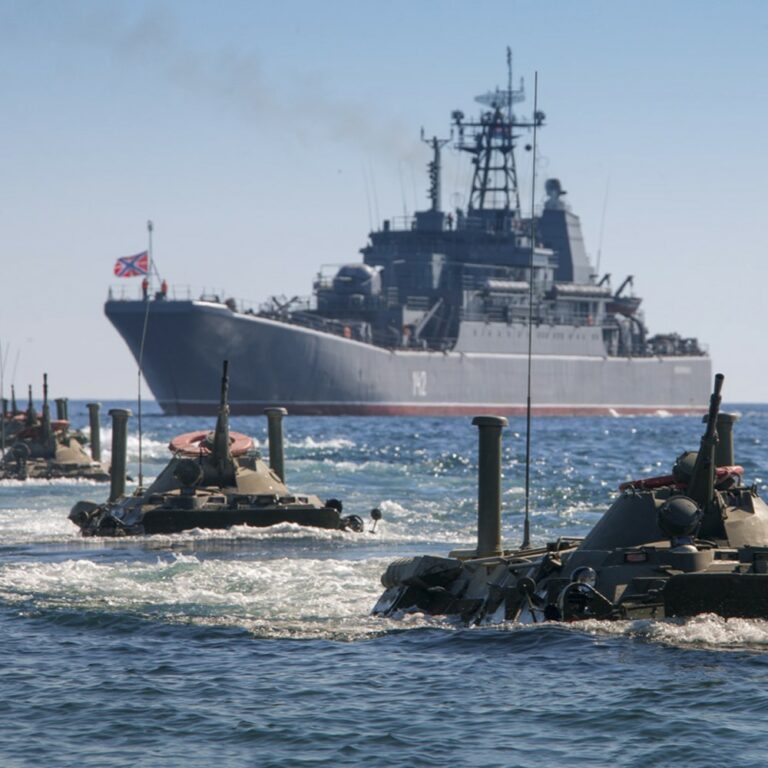
In 1996, the six coastal states of the Black Sea signed the Strategic Action Plan for the Environmental Protection and Rehabilitation of the Black Sea. This plan was necessitated by the alarming destruction of the Black Sea’s unique natural complexes due to human impact. Today, the urgency to preserve the Black Sea is greater than ever as it faces the repercussions of the Russian invasion. How is the war affecting the Black Sea, and what measures can be taken to mitigate the consequences for both nature and humanity?
Together with a marine biologist and a specialist from the climate department at NGO Ecoaction, Sofiia Sadohurska, we dive into details about the uniqueness of the Black Sea, why its biodiversity needs to be protected, and how the war affects its ecosystem. We will also discover if there is any hope for the sea’s restoration and how to overcome the consequences of war.
The Black Sea before the war VS now
The Black Sea and its coastlines hold cherished memories for millions. For thousands of years, this region has been a nexus of trade routes between Europe and Asia, rendering it significant from both biological and geographical perspectives. It is a unique sea basin, characterised by distinct climatic conditions, natural factors, and a rich biodiversity.
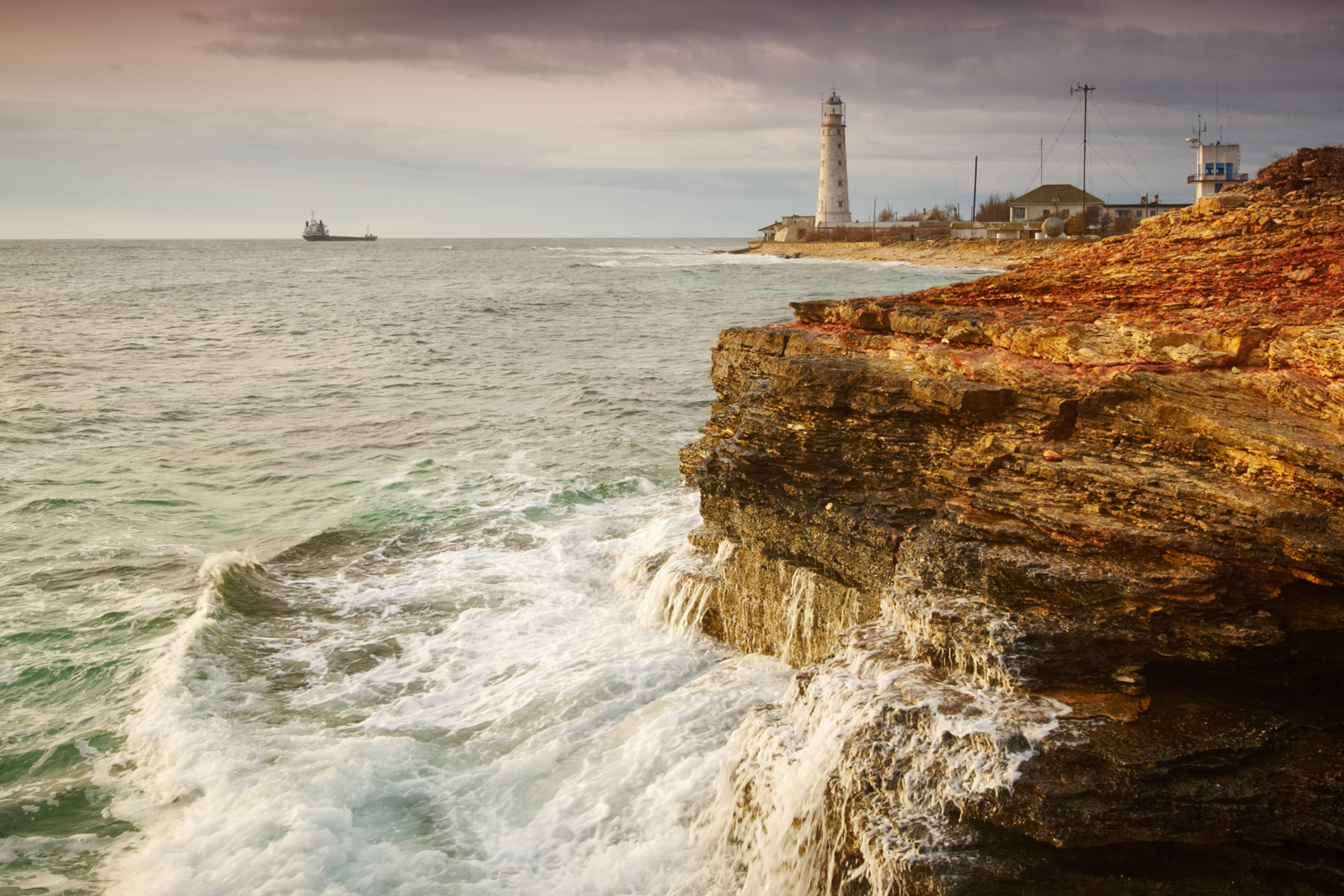
The coast of the Black Sea. Photo by Serhii Sverdelov
The Black Sea is an extraordinary body of water, distinct from other seas and oceans. Geographically, it is a semi-enclosed sea, completely encircled by land, with limited connection to the World Ocean through a system of straits. It receives fresh water from multiple rivers, resulting in the Black Sea’s salinity being almost half that of ocean waters. Another unique feature of the Black Sea is its status as the world’s largest meromictic basin, meaning its upper water layer does not mix with the lower, oxygen-depleted layer rich in hydrogen sulphide, which accounts for over 80% of the sea’s total volume. Consequently, its rich biodiversity is confined to the oxygen-rich upper layer.
The current sea basin formed just 6–8 thousand years ago with the emergence of the Bosphorus strait, allowing the saline waters of the Mediterranean to mix with the existing freshwater basin. The Black Sea’s biodiversity comprises ancient species and those introduced from the Mediterranean. The combination of these exceptional conditions and the sea’s isolation have fostered a unique biodiversity, including endemic species found nowhere else in the world.
However, its semi-enclosed nature and the large volume of oxygen-depleted waters render the Black Sea particularly susceptible to human activity and climate change.

Packaging of manufactured products at the Kerch Fish Cannery, 1950s. Photo: babel.ua.
Despite challenges, since the 1990s, there has been hope for the revival of marine life in the Black Sea. Scientists have observed signs of ecosystem restoration in its northern part, particularly due to a reduction in biogenic substances flowing from rivers, which in turn has lessened the concentration of organic compounds in the Black Sea’s shelf area. However, the Russian invasion commenced in 2014 poses a significant threat to the Black Sea’s condition. The impact of Russian occupation and warfare is multifaceted and complex, disrupting not only regional security but also altering sea transportation routes and water management and hindering decades of scientific research by Ukrainian scientists. It has emerged as a new ecological challenge.
Military activities harm the nature reserve fund, leading to sea pollution from sunken equipment and damaged coastal infrastructure, and adversely affect the coastal ecosystems.
Impact of the war on seas and coastal Areas
Since the Russian-Ukrainian war erupted in 2014, numerous protected areas have fallen under Russian occupation. Many suffer from inadequate protection and altered statuses, while others are directly impacted by the actions of the occupiers. A notable example is the militarisation of Crimea, including military exercises in or near protected zones. The Russians have conducted extensive military drills near Cape Chauda on the Kerch Peninsula, adversely affecting the steppe, coastal, and marine ecosystems of the Opuk Nature Reserve. In areas of intense militarisation and training, a significant amount of ammunition has been used, particularly at sea, causing harm to living organisms and contaminating soil, air, and water.
Protected areas have also suffered damage or destruction due to natural resource depletion and quarry construction. For instance, the Bakal Spit in northern Crimea, a regional landscape park, experienced illegal sand mining by the occupiers for various construction projects on the peninsula. Furthermore, large-scale infrastructure projects pose additional risks. The infamous Kerch Bridge, built in 2018, could have altered ecosystems and hydrogeological conditions in the Kerch Strait and the entire Azov Sea. The construction of this bridge virtually destroyed the natural habitats on Tuzla Island in the Kerch Strait and disrupted the migration routes of marine animals.
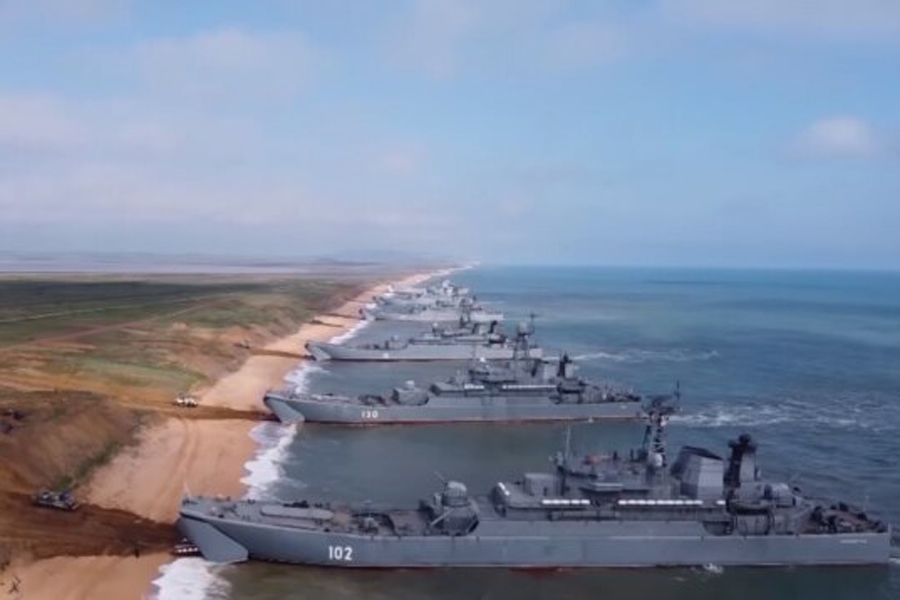
Russian Black Sea Fleet ships off the coast of Crimea. Screenshot from the video.
With the onset of the full-scale Russian war against Ukraine, the impact on the seas has intensified. Protected areas along the Black and Azov Seas are suffering from both occupation and hostilities. All of Ukraine’s marine nature reserves, along with seven coastal national nature parks and one biosphere reserve, are currently under occupation. These areas, encompassing a diverse range of habitats like seagrass meadows, underwater seaweed forests, dunes, and lagoons, were established to safeguard the unique marine and coastal ecosystems of the Black and Azov Seas.
Certain territories, like the Kinburn Spit or Dzharylhach Island in the Black Sea, face direct hostilities or have Russian troops present. The building of fortifications and trenches, along with the movement of military equipment and frequent explosions, are damaging vegetation and soil. Fires, ignited both by combat and other factors, add to the devastation. Occupation exacerbates the issue, with the occupiers mining lands and destroying firefighting equipment. The Kinburn Spit alone witnessed 131 fires in the first year of the full-scale invasion, marking 2022 as the year with the largest fires in recent decades. These fires devastated over 5,000 hectares, impacting steppe and coastal ecosystems and the nesting sites of around 100 bird species.
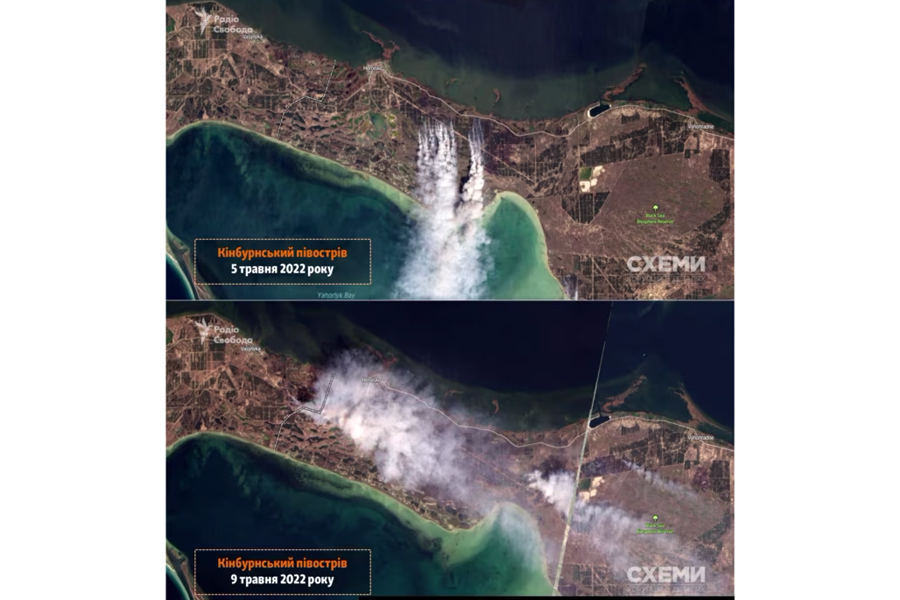
Fires on the Kinburn Peninsula in May 2022. Source: Radio Liberty.
Satellite data reveals that the occupiers are constructing fortifications in the coastal zone of the Crimean Peninsula, encroaching upon areas that are part of Ukraine’s Emerald Network. This network encompasses territories and waters dedicated to preserving habitats rare in Europe. Beyond the Emerald Network, the Black Sea coastline also features other vital areas for the conservation of species and habitats that are rare in Ukraine and globally.
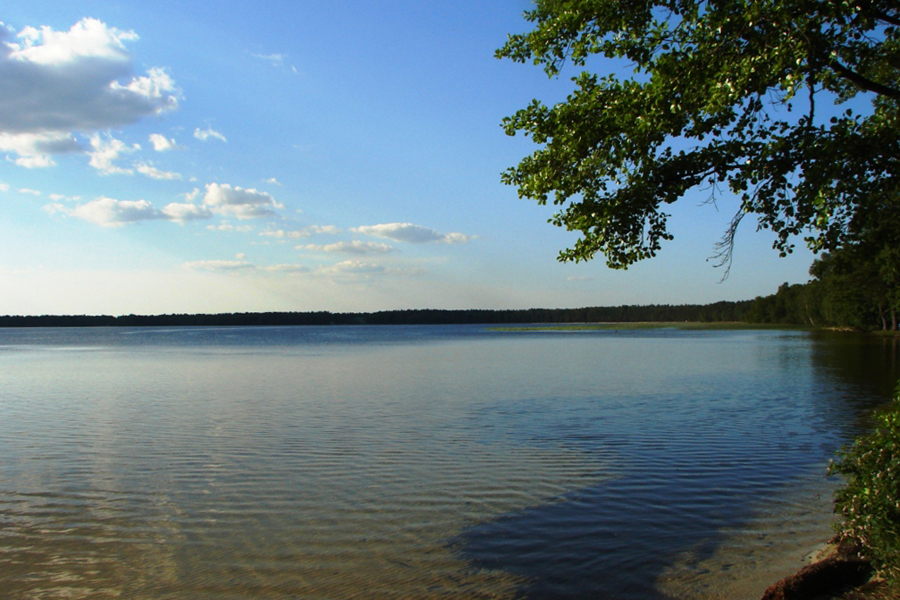
Ramsar site — Lake Bile, a natural area of international importance. Photo from open sources.
The catastrophe at the Kakhovka hydroelectric power plant on June 6, 2023, resulting from the Russian detonation of the dam, significantly impacted nature conservation efforts. The flooding affected several nature reserves, including the Lower Dnipro National Nature Park, established to protect the natural floodplain complexes of the Dnipro Delta. This event posed a serious threat to the survival of various species and ecosystems.
How Russia pollutes Ukrainian marine environment
The destruction of the Kakhovka HPP resulted in the release of vast volumes of fresh water contaminated with fertilisers, fuel, lubricants, and sewage into the Black Sea. Following the hydroelectric power plant explosion, this polluted river water reached the Danube’s mouth, affecting over 7,300 km2 of the sea area. Scientists have noted a rapid decrease in water salinity in the Gulf of Odesa. In some coastal zones, exceedingly high nitrogen levels were recorded, indicative of sewage pollution. This significant drop in salinity has caused the demise of various marine life, including mussel colonies, fry, and fish eggs, potentially disrupting the entire coastal ecosystem. The influx of polluted fresh water has also triggered extensive algae blooms, further impacting the sea’s health.
Unfortunately, the environmental impact of the infrastructure facilities destruction in the war is not a singular occurrence. Numerous Russian attacks along the Black Sea coastline have led to the devastation of sewage treatment plants and port infrastructures, resulting in unchecked pollution entering the sea. The monitoring group CEOBS has documented several instances of such pollution in the Dnipro-Buh estuary near Mykolaiv. Russian attacks have targeted key industrial sites on the estuary’s left bank, including the Mykolaiv Alumina Plant, where storage tanks for fuel, caustic soda, and recyclable materials were damaged. Additionally, grain terminals and a sunflower oil terminal were hit, leading to significant pollution of the estuary waters and the surrounding marine environment.
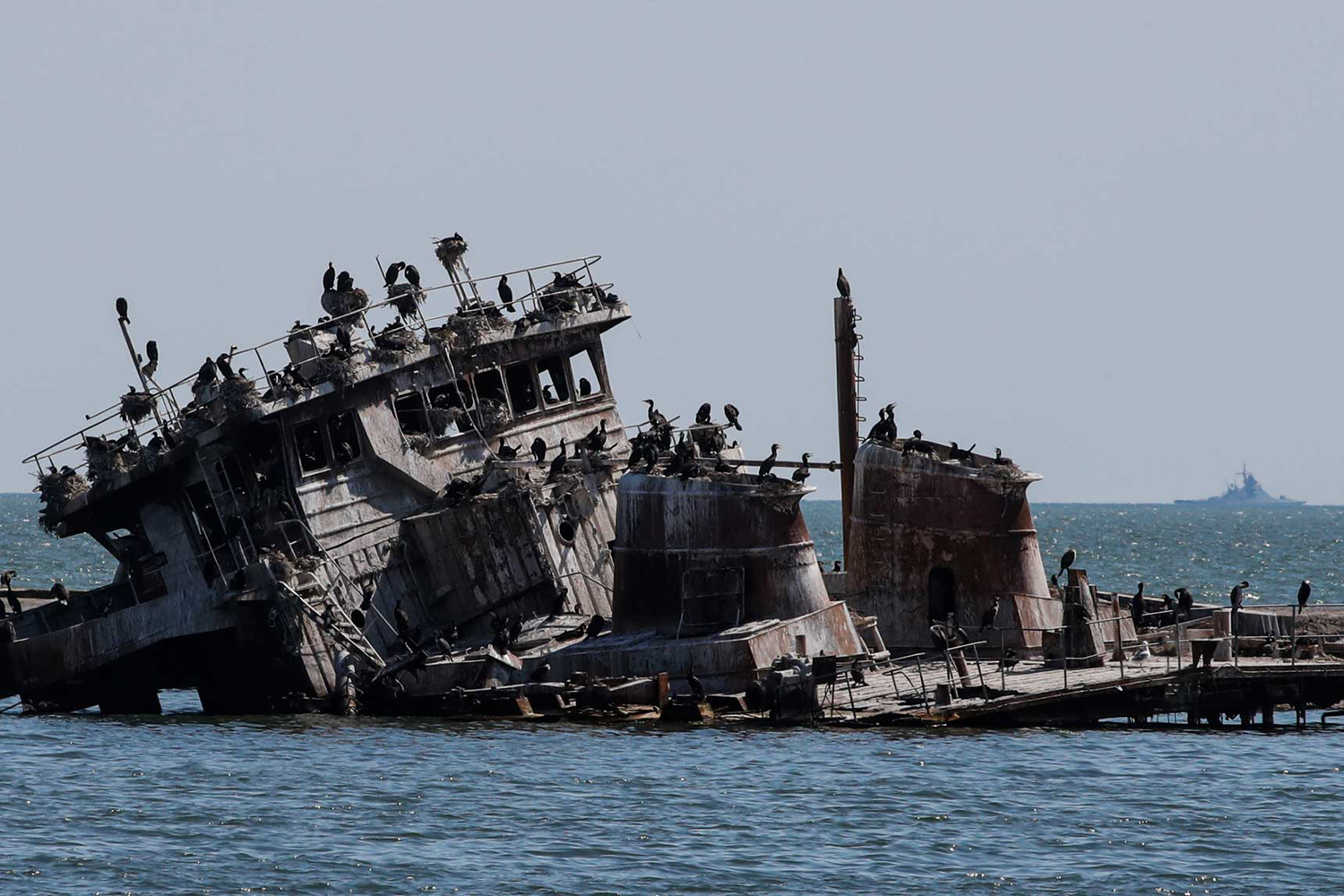
A Russian warship in the Sea of Azov behind a sunken Ukrainian vessel in the cargo port of Mariupol. Photo from open sources.
Additional pollution in the sea comes from submerged military equipment, ships, and ammunition, releasing chemical compounds, rocket fuel residues, and heavy metals into the water. Sunken ships and aircraft are also significant sources of oil pollution. Due to the presence of Russian mines, scientists’ access to the Black Sea is restricted, but satellite imagery provides vital data on oil and other pollutants.
Scientists estimate that oil slicks have covered tens of thousands of square kilometres of Ukraine’s marine protected areas. This oil layer impedes oxygen penetration into the water, inflicting immense damage on marine life and often leading to mass fatalities. Oil and lubricants are particularly toxic to aquatic life, especially the tiny organisms in plankton and neuston (organisms living near the water’s surface). Oil residues can linger on the sea surface for extended periods, drifting with currents, washing ashore, or sinking to the seabed, posing long-term ecological challenges.
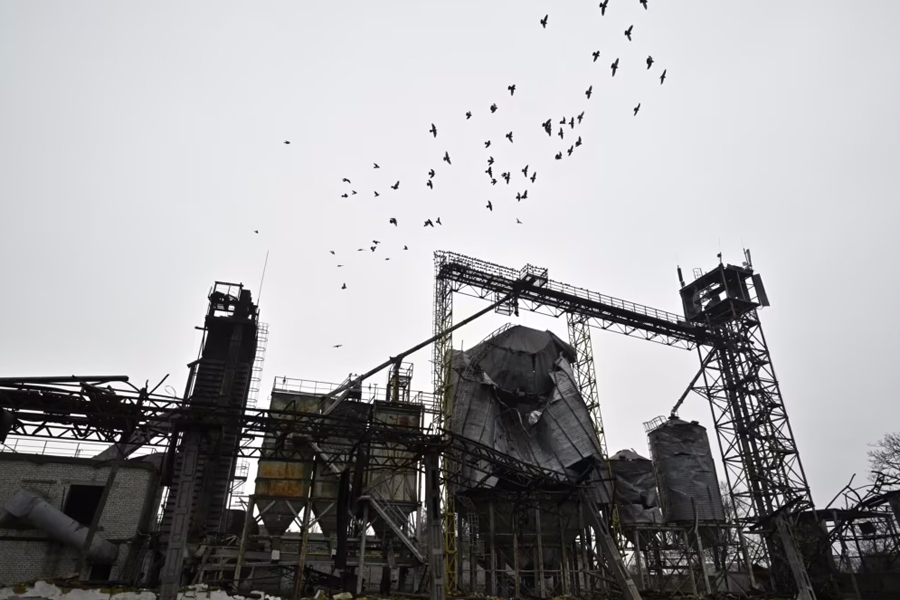
The port of Ochakov. Photo: Zhenya Savilov.
The impact of war on marine animals in Ukraine
The Russian army extensively mined Ukraine’s waters and vast territories, which poses another long-term ecological challenge. Mines not only contaminate the environment with explosives and heavy metals but also threaten marine life through accidental detonation. Underwater explosions can lead to massive fish kills and inflict mine-blast injuries on aquatic creatures. These events also negatively impact cetaceans in the Black Sea, including three species: bottlenose dolphins, white-sided dolphins, and common foccids (porpoises). All are listed in The Red Data Book of Ukraine and require special protection, a need that has become even more critical during the war. Additionally, submarine use of sonars (hydroacoustic stations) presents an extra risk to these marine mammals. The sonar interferes with dolphins’ echolocation abilities, essential for their navigation and communication.
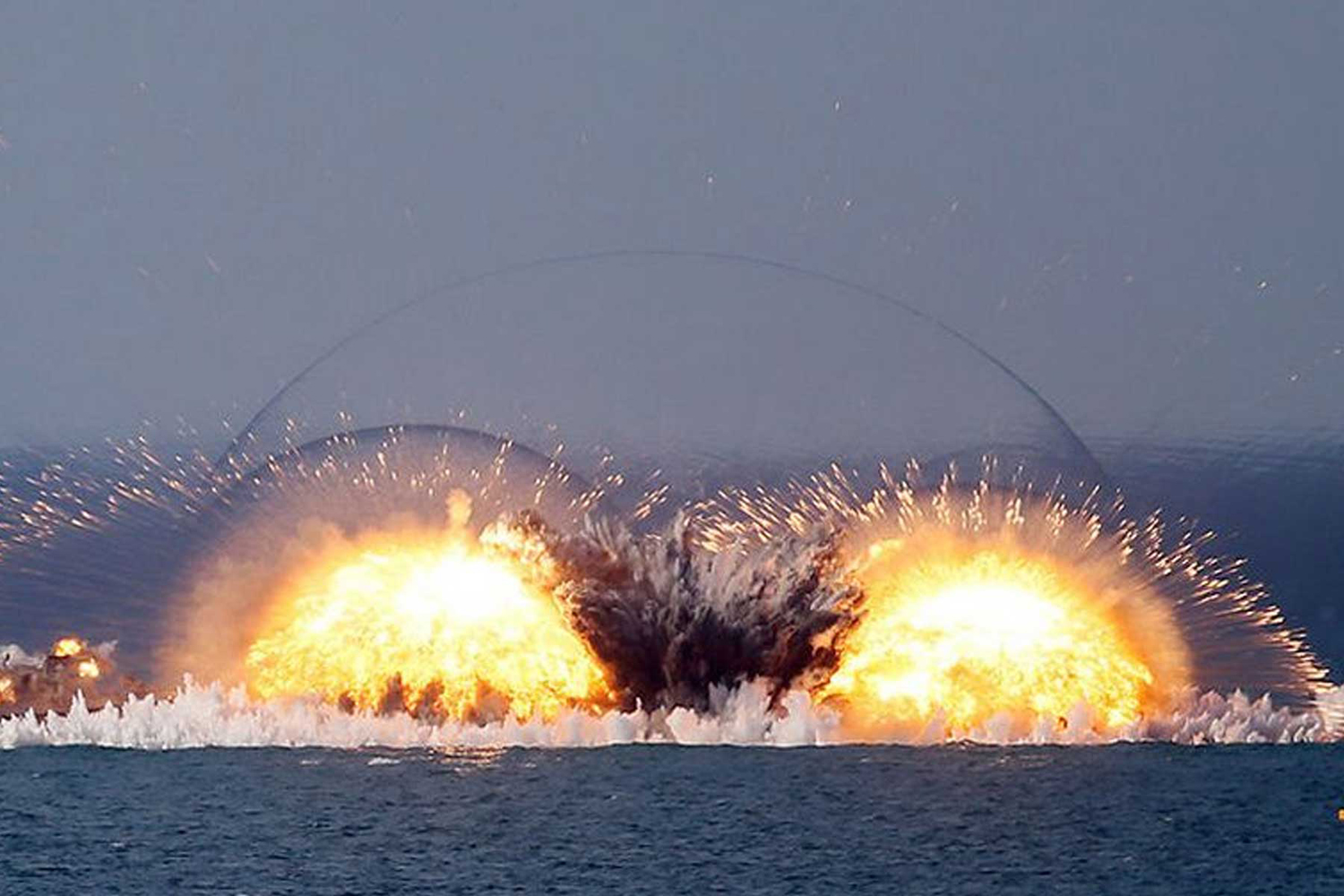
A vacuum bomb explosion at the Opuk test site. Photo: BlackSeaNews.
Since February 2022, scientists have observed widespread cetacean fatalities across the Black Sea. In the year since the full-scale war began, about 1,000 dolphins have been found dead, a figure that is two to three times higher than in previous years. The actual number of casualties could be even greater. Notably, there has also been a significant increase in dolphins washing ashore while still alive.
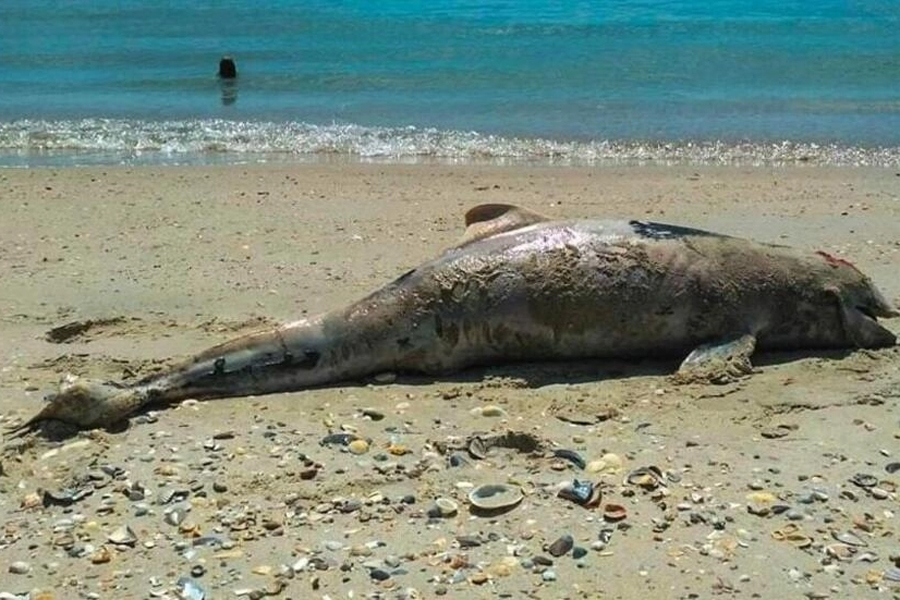
A dead dolphin on the Black Sea coast. Photo: Ivan Rusev / Facebook.
To ascertain the precise cause of each animal’s death, scientists need to conduct tests and autopsies. These examinations will clarify whether the deceased dolphins experienced acoustic trauma or if their deaths were combat-related. During these autopsies, tissue, and organ samples are collected for further analysis. Currently, specialist scientists are conducting this work in collaboration with law enforcement agencies, as the Ukrainian Prosecutor’s Office has initiated a criminal investigation into the mass cetacean deaths and crime of ecocide.

